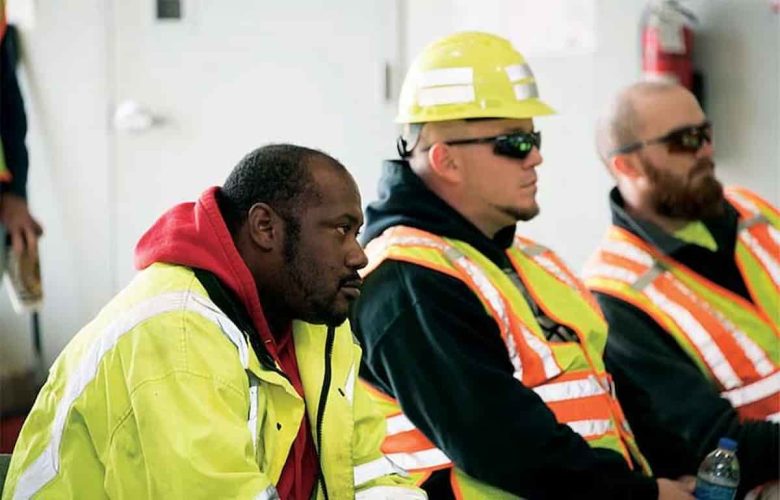In today’s dynamic work environment, ensuring the safety and well-being of employees has never been more critical. Organizations across industries are recognizing the pivotal role that safety training plays in not only preventing accidents but also in boosting overall employee performance. This article delves into the significance of safety training, its impact on employee performance, and the role it plays in ensuring regulatory compliance.
Understanding the Impact of Safety Training on Employee Performance
Safety training, including the comprehensive OSHA 30 construction online training, is a cornerstone of a successful organization. Beyond the prevention of accidents and injuries, it significantly contributes to enhancing overall employee performance. By providing employees with comprehensive safety education, organizations empower them to recognize potential hazards and respond effectively. This knowledge not only instills confidence but also positively influences their productivity and job satisfaction. Employees who are well-versed in safety protocols are more likely to approach tasks with a sense of security and caution, leading to increased efficiency and reduced downtime.
Compliance with Safety Regulations and Standards
In an ever-evolving regulatory landscape, adherence to safety regulations is a non-negotiable aspect for any business. Safety training ensures that employees are not only aware of the regulations governing their specific industry but also understand how to implement them effectively. It serves as a shield against costly legal consequences and reputational damage that can arise from non-compliance. Furthermore, organizations that prioritize safety training signal their commitment to the well-being of their workforce, fostering a culture of responsibility and accountability.
Customized Training Programs for Specific Industries and Roles
Recognizing that safety concerns and protocols can vary significantly across industries, effective safety training should be tailored to the specific needs of each sector. Customized training programs take into account the unique hazards and challenges that employees face in their respective roles. Whether it’s construction, healthcare, manufacturing, or any other field, industry-specific safety training equips employees with the precise knowledge and skills they need to navigate potential risks successfully.
Interactive and Engaging Learning Methods
The days of monotonous safety lectures are long gone. Modern safety training, like the innovative OSHA 360 training, employs interactive and engaging learning methods to capture employees’ attention and enhance their learning experience. From virtual reality simulations to gamified modules, these approaches not only make the training process more enjoyable but also improve retention and application of knowledge. Interactive learning methods encourage active participation and critical thinking, enabling employees to grasp safety concepts more effectively.
Real-Life Application of Safety Skills
The true measure of effective safety training lies in its real-life application. Classroom knowledge must seamlessly translate into on-the-job practices to ensure a safe working environment. Safety training should focus on practical scenarios, allowing employees to practice emergency response, hazard identification, and proper use of safety equipment. When employees can confidently apply their safety skills in their daily tasks, the organization benefits from reduced accidents, minimized downtime, and an overall increase in operational efficiency.
Building a Safety-Conscious Culture
Safety training is not just about acquiring skills; it’s about fostering a safety-conscious culture within the organization. This cultural shift encourages employees to take ownership of their safety and that of their colleagues. A culture that values safety promotes open communication, active hazard reporting, and continuous improvement. Safety training plays a pivotal role in shaping this culture by instilling a sense of responsibility and vigilance in every employee, from top management to frontline workers.
Measuring the Effectiveness of Safety Training
To ensure that safety training programs deliver the desired outcomes, measuring their effectiveness is essential. Key performance indicators such as reduced incident rates, improved near-miss reporting, and increased compliance with safety protocols can gauge the impact of training. Regular assessments, quizzes, and practical evaluations provide insight into employees’ understanding and retention of safety knowledge. Feedback from employees and supervisors also helps identify areas for improvement, ensuring that the training remains relevant and impactful.
Conclusion
Safety training is the cornerstone of a successful workplace safety strategy. By providing employees with the knowledge, skills, and confidence to identify and mitigate hazards, organizations can create safer work environments and prevent accidents. A comprehensive safety training program not only ensures compliance with regulations but also promotes a culture of vigilance and responsibility. From customized training programs to interactive learning methods, the evolution of safety training has transformed it into a dynamic and effective tool for enhancing workplace safety. As organizations continue to invest in safety training, they are not only protecting their employees but also laying the foundation for sustained success and growth.

